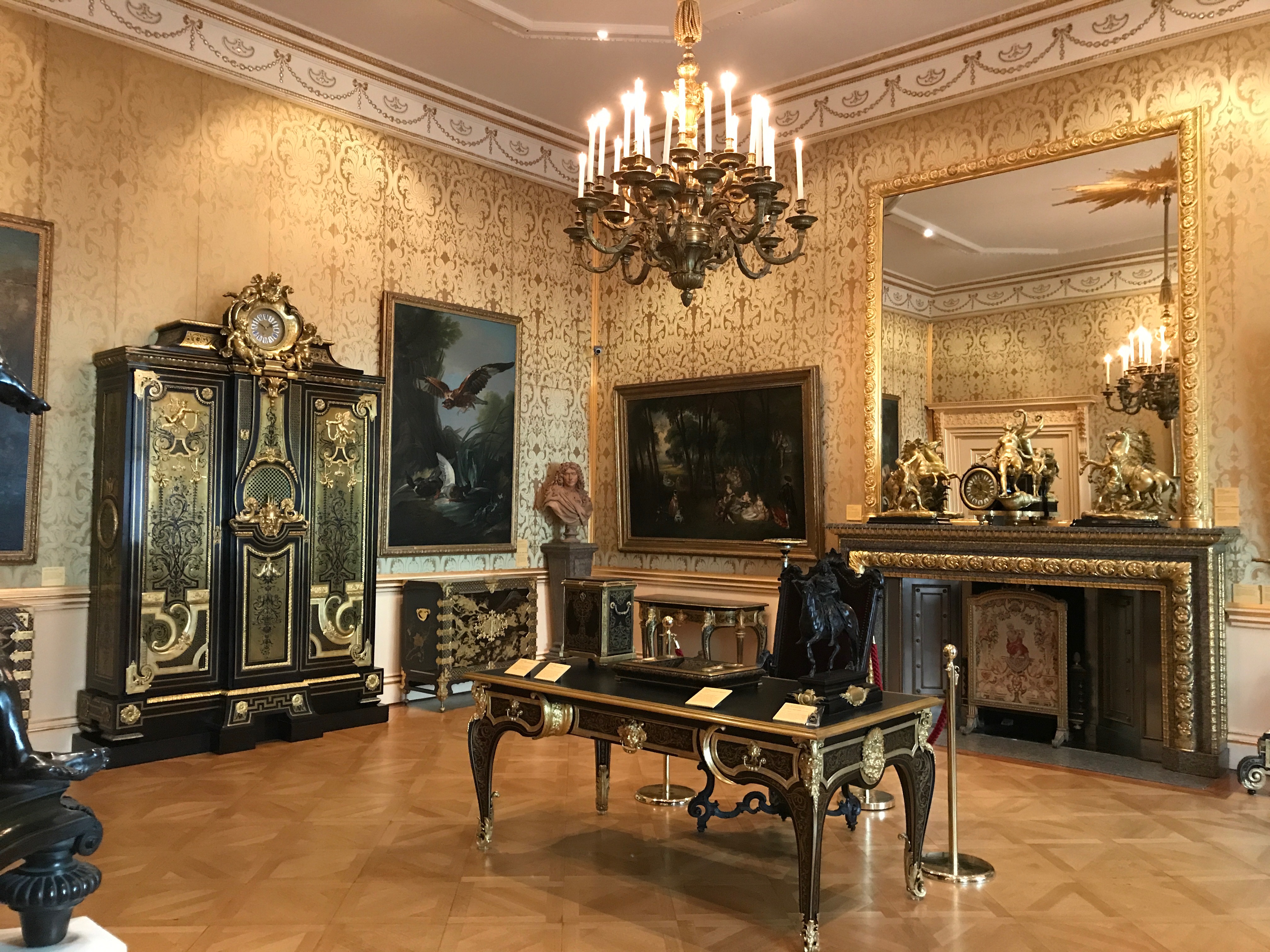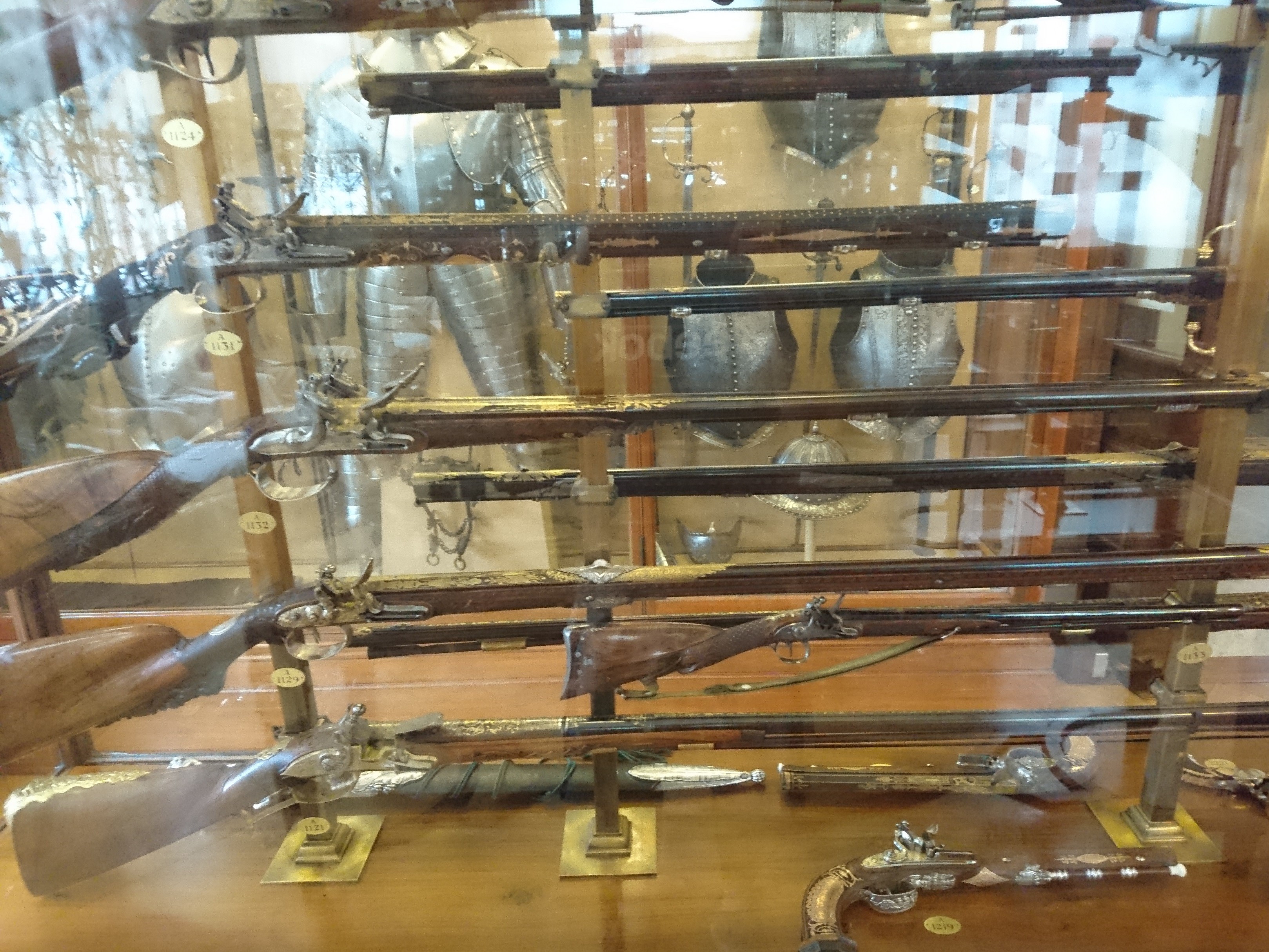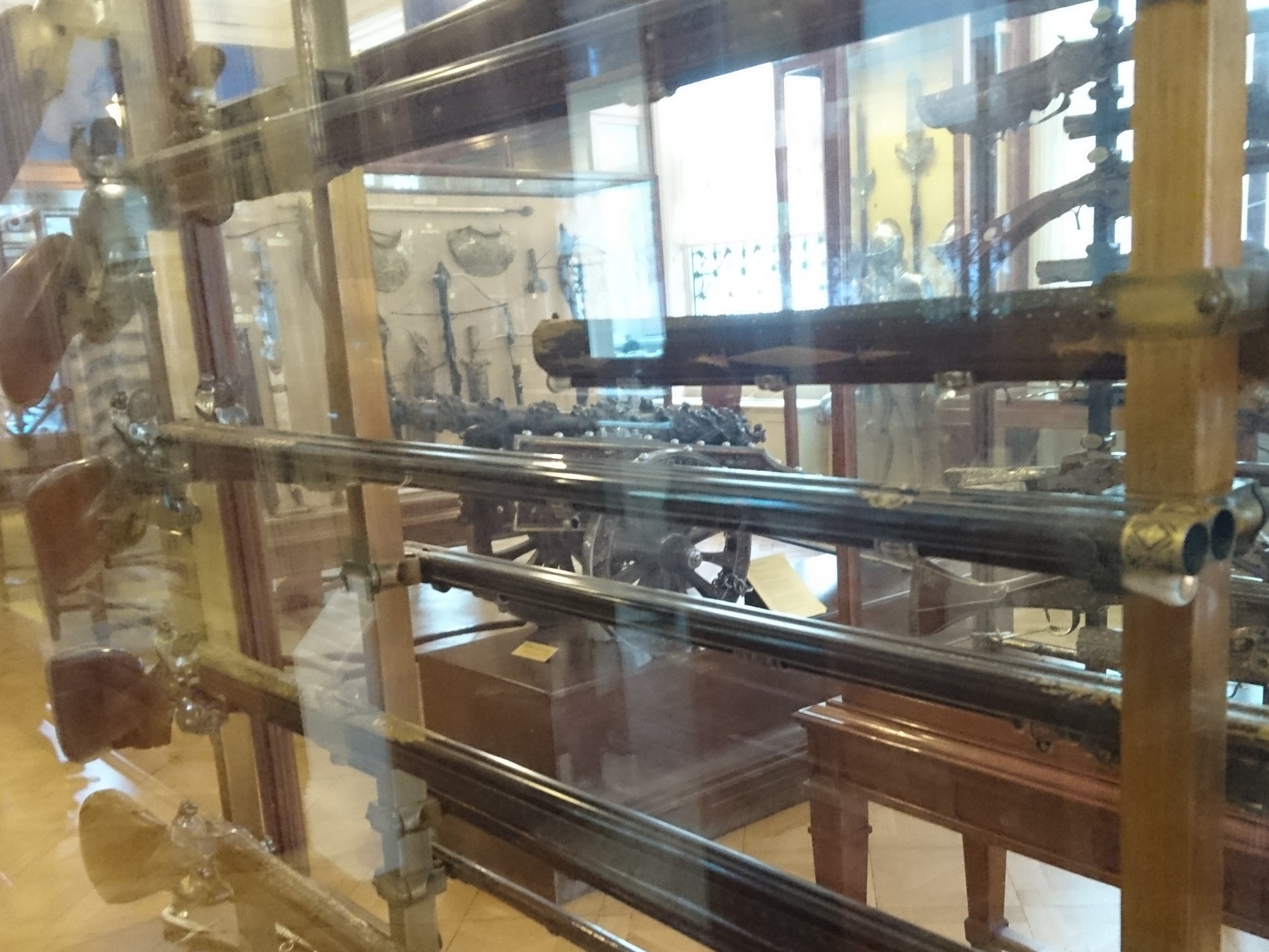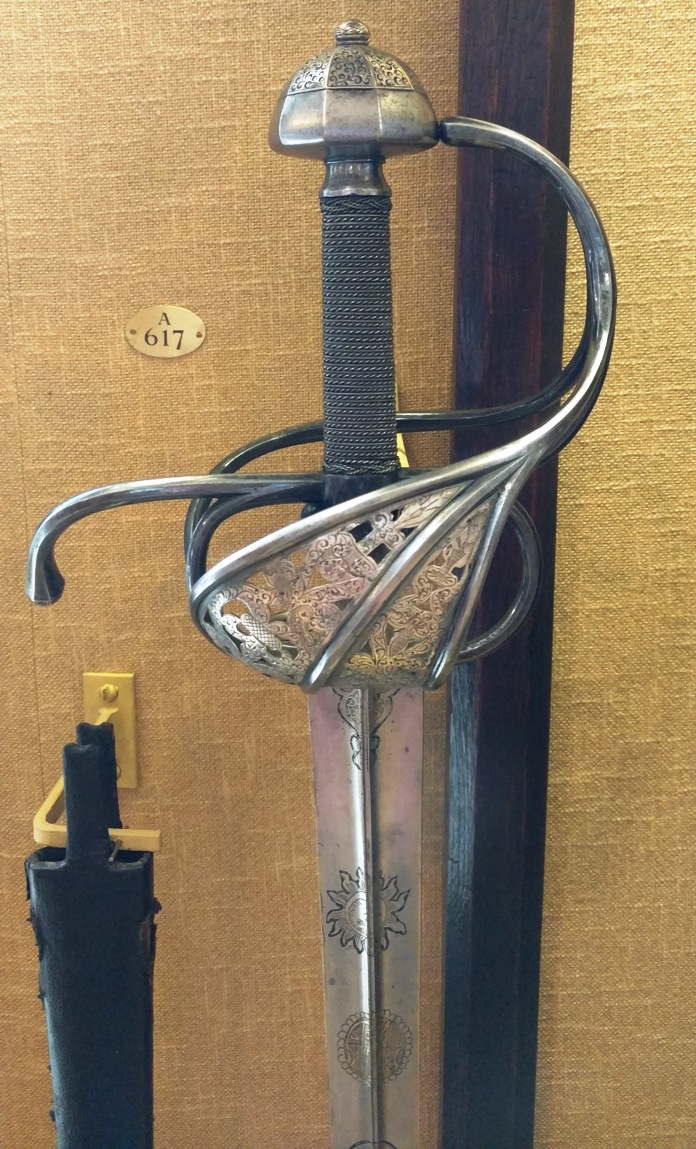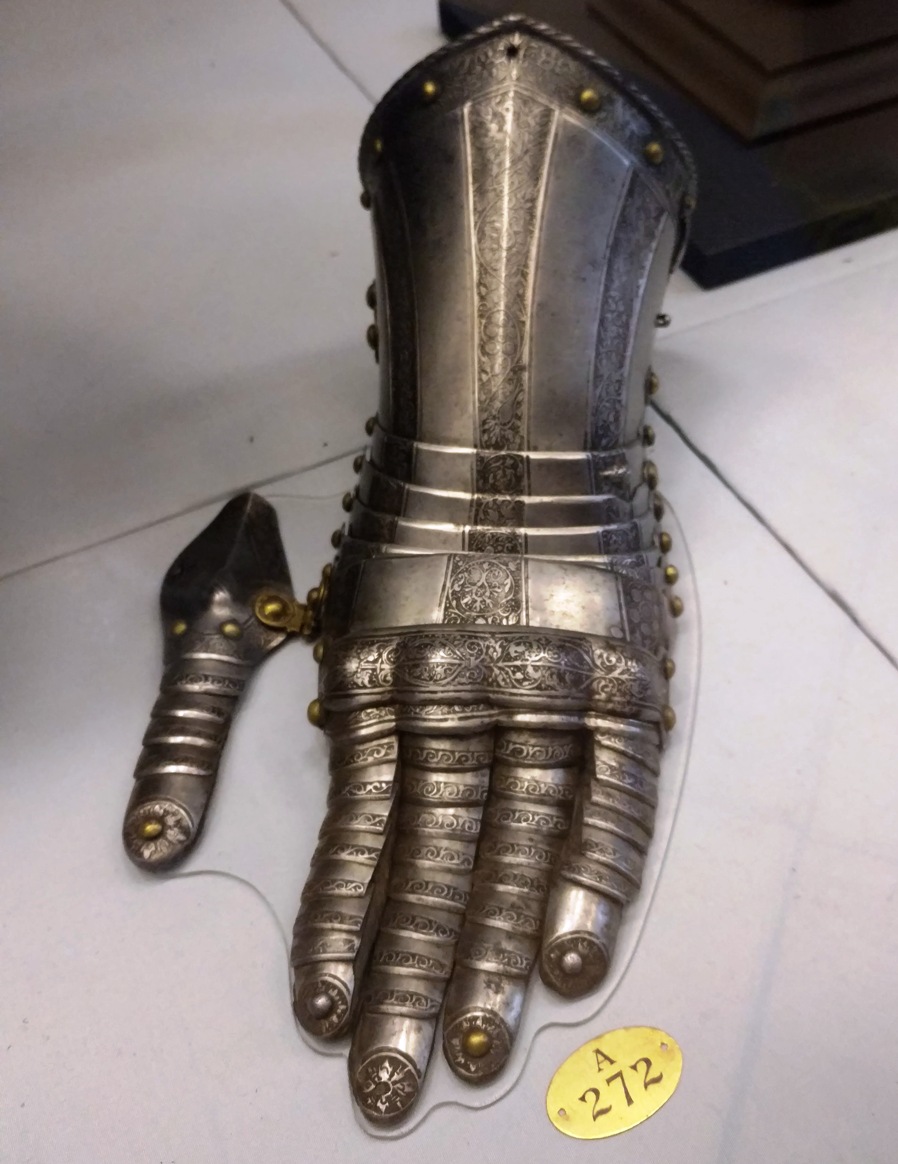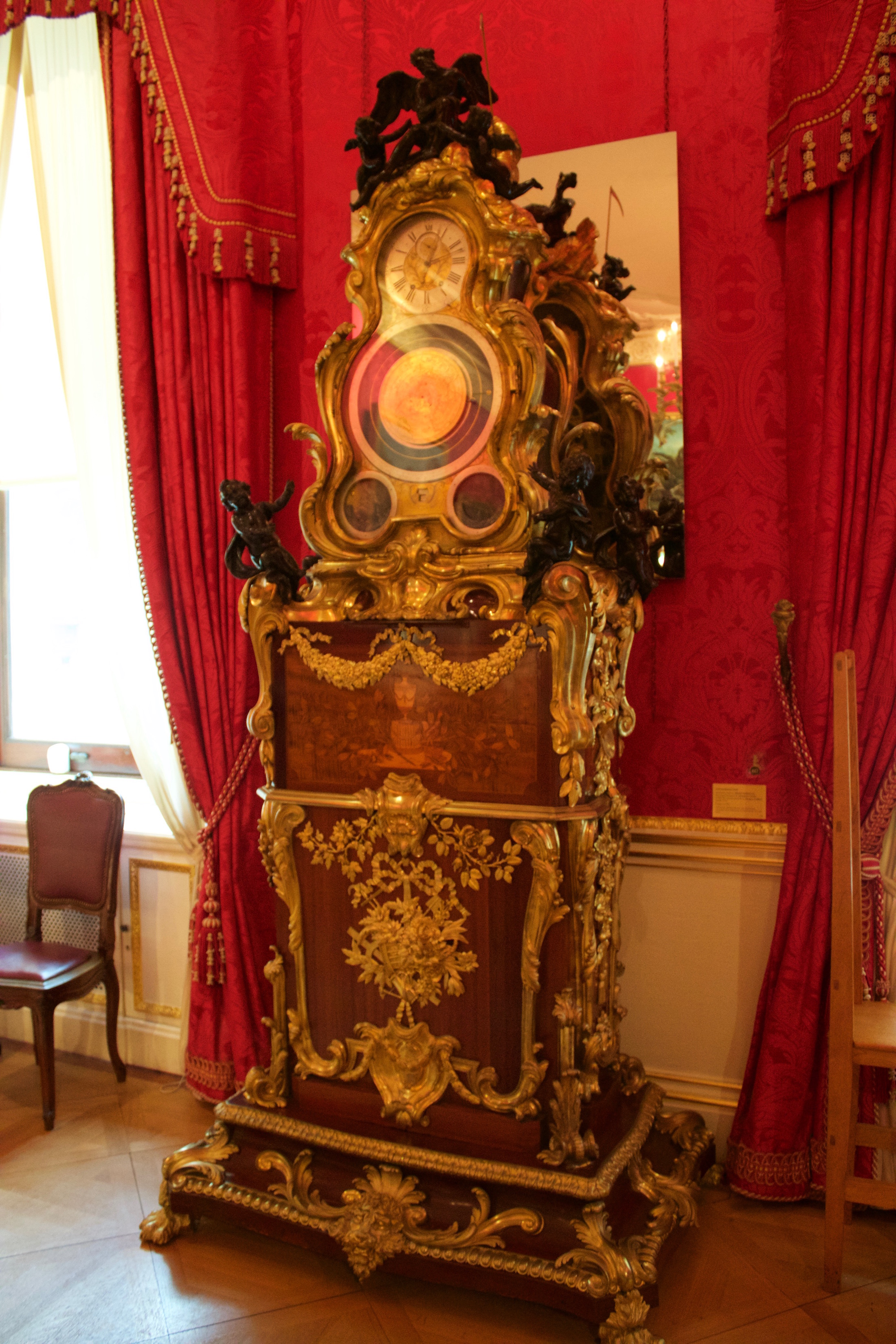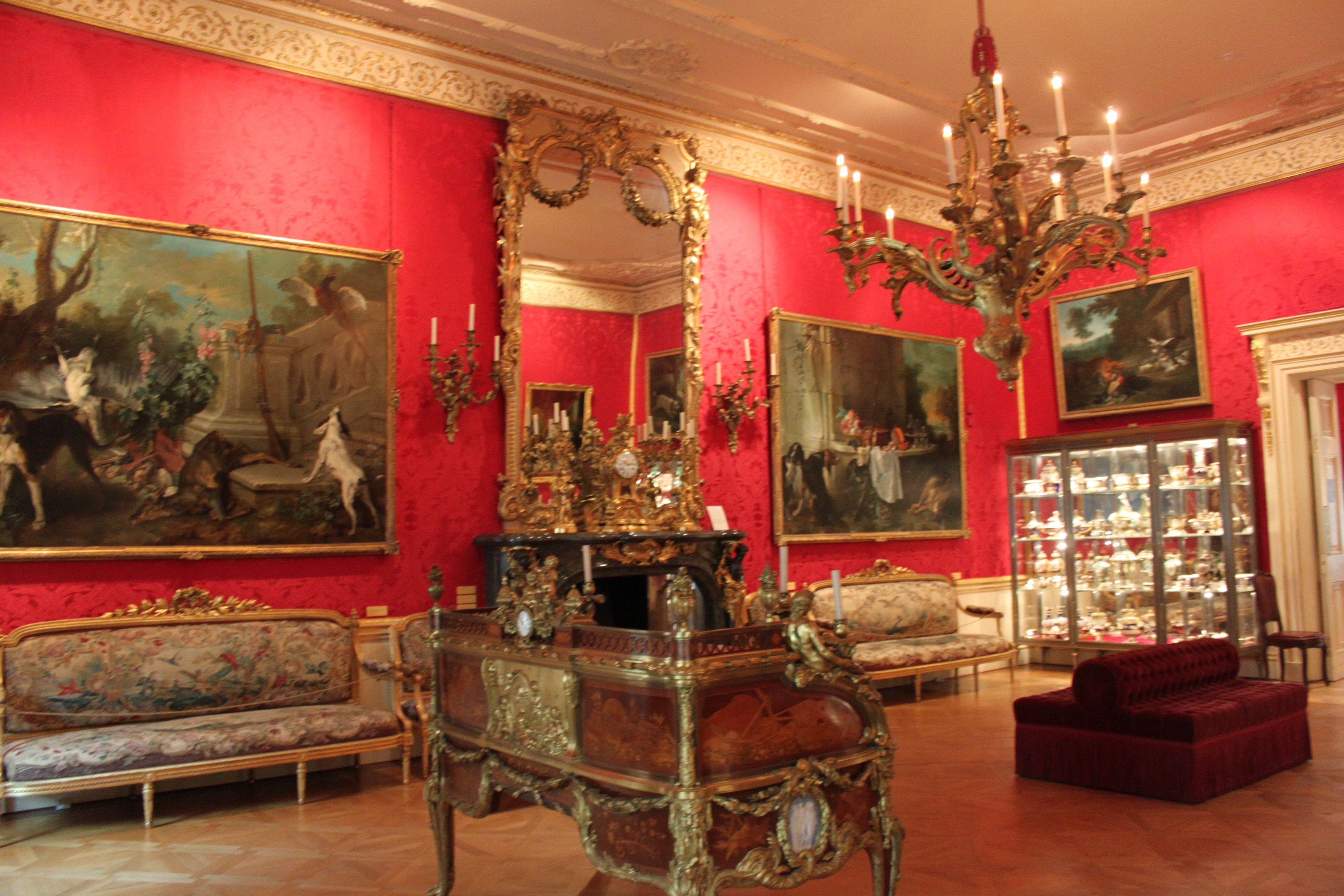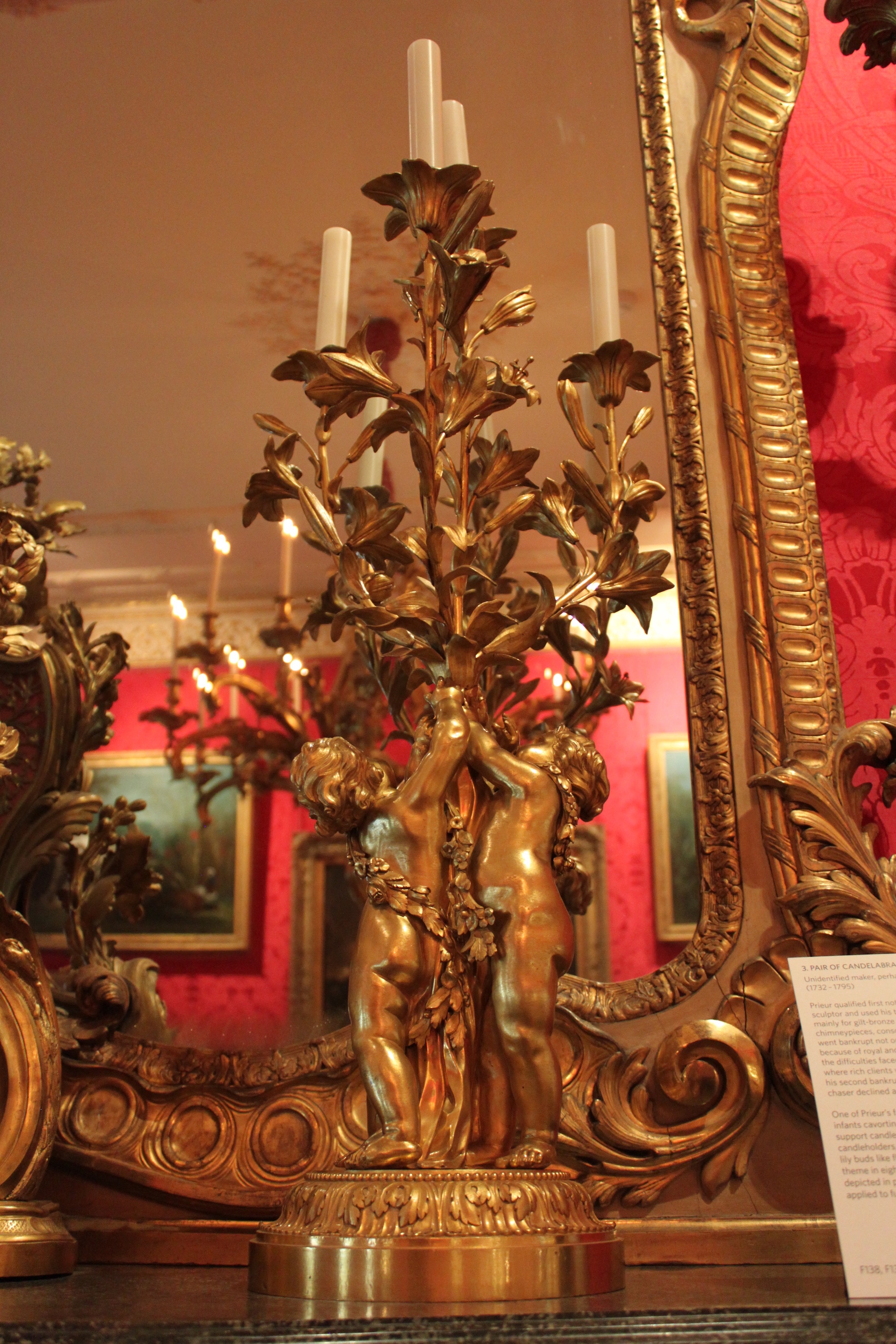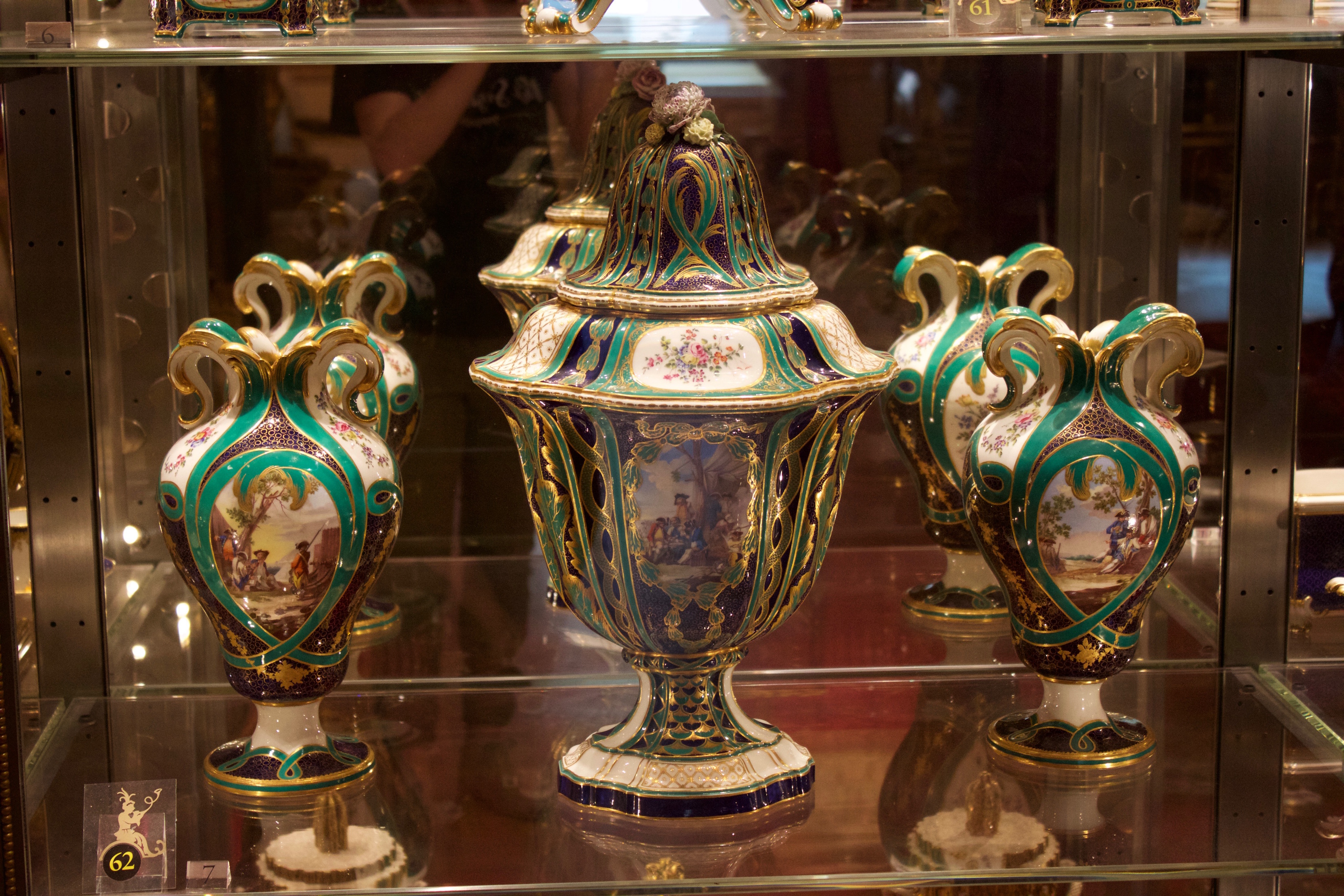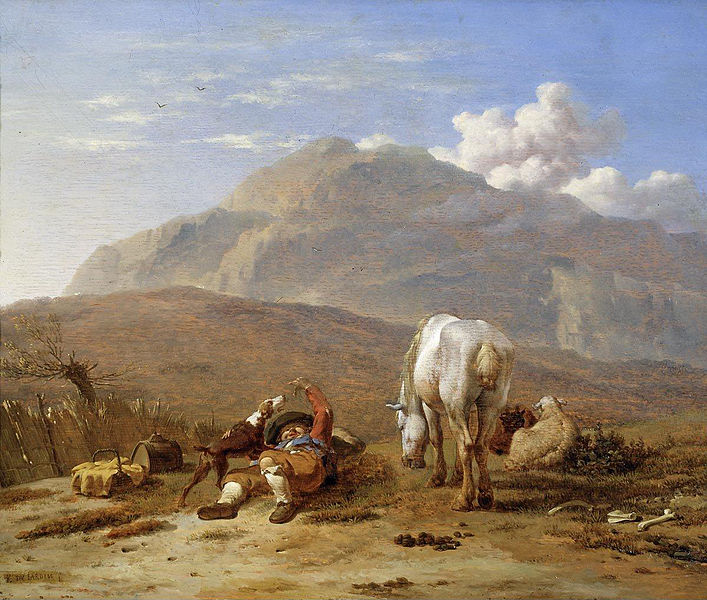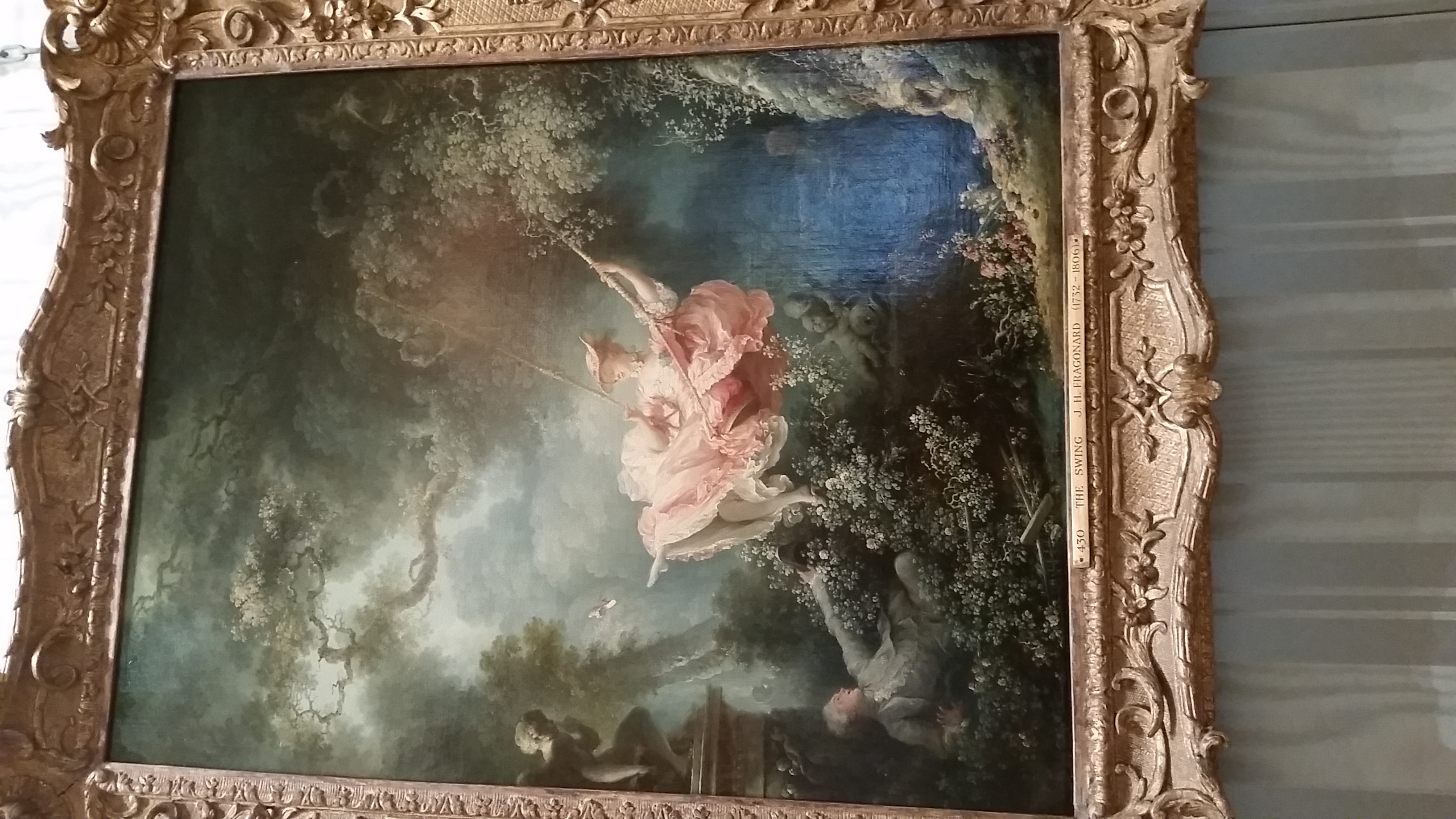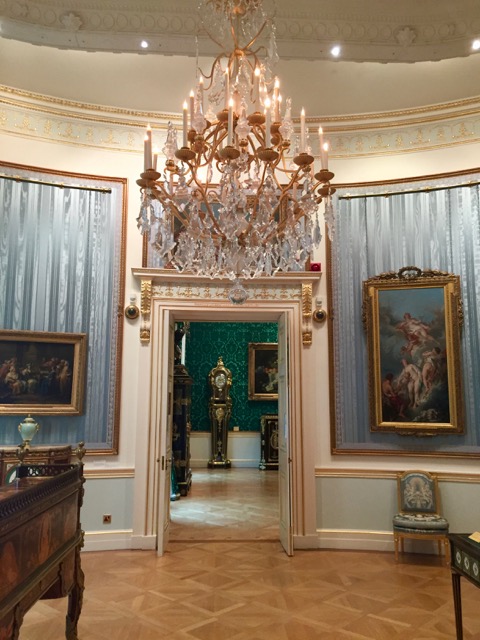Difference between revisions of "The Wallace Collection"
From Londonhua WIKI
(→Boudior) |
|||
| Line 128: | Line 128: | ||
==West Gallery I== | ==West Gallery I== | ||
<br> | <br> | ||
| − | + | Antonio Canale, called Canaletto, and Francesco Guardi were the two outstanding Venetian view painters of the eighteenth century. Although Canaletto's style seems much more descriptive than Guardi's, both artists created a carefully staged image of Venice. Most of their works were painted for tourists who visited the city, primarily British travellers who came to the Venetian Republic on their Grand Tour. Like many of these tourists, the 1st Marquess of Hertford acquired paintings by Canaletto during a stay in Italy. They are among the earliest acquisitions of artworks by the family to remain in the Collection. The room was created in 1897 from Sir Richard Wallace's Dressing Room, Lady Wallace's Bath Room and Dressing Room and a corridor. | |
<br><br> | <br><br> | ||
Revision as of 09:33, 2 June 2017
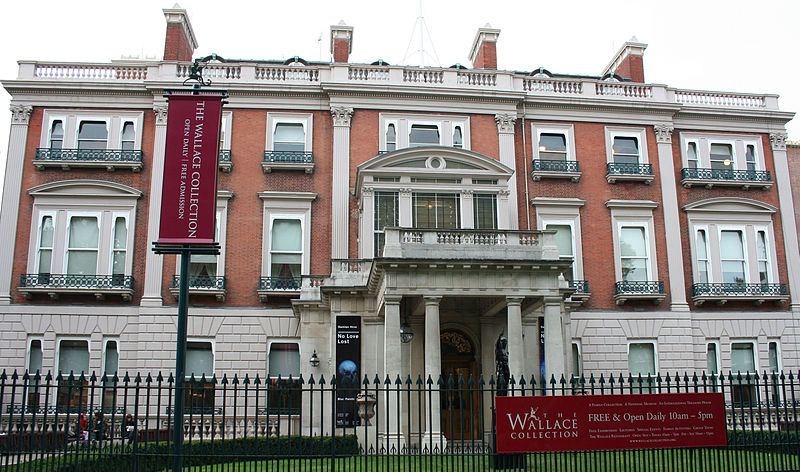 Hertford House |
Contents
- 1 Overview
- 2 Background
- 3 Floor 1
- 4 Floor 2
- 4.1 Landing
- 4.2 Boudior
- 4.3 West Room
- 4.4 West Gallery I
- 4.5 West Gallery II
- 4.6 West Gallery III
- 4.7 Great Gallery
- 4.8 East Gallery I
- 4.9 East Gallery II
- 4.10 East Gallery III
- 4.11 East Drawing Room
- 4.12 Large Drawing Room
- 4.13 Small Drawing Room
- 4.14 Oval Drawing Room
- 4.15 Study
- 4.16 Boudor Cabinet
- 5 Basement
- 6 References
- 7 External Links
- 8 Image Gallery
Overview
The Wallace Collection is a free to the public art collection that is houes in the once home of the Seymour family. It is located in Manchester Square, in the City of Westminster and is split into six different departments determined by type. The collection started between 1760 and 1880 by the first four Marquesses of Hertford and Sir Richard Wallace, the illegitimate son of the 4th Marquess. In 1897, the private collections were then donated to the nation by Richard Wallace's widow after her death to be a public collection.
Background
Inside The Wallace Collection, one can find works of many different types such as Ceramics and Glass, or Arms and Armor. There are 25 different galleries where one can wooed and impressed by 18th century French paintings and such. The collection is displayed in the private home of the late Wallace's.
Floor 1
Billiard Room
The Billiard Room is a showcase for some of the best furniture by André-Charles Boulle (1642-1732) and for the arts under Louis XIV during Régence. Boulle was a a cabinet maker to Louis XIV, the self-styled Sun King during whose reign France became pre-eminent in the arts. Louis XIV set up a well organized and efficient system of state support for the artist create the official image of the monarchy and to support the economy. In 1897 the billiard room was dominated by a huge billiard table, as was usual in many larger houses at the time. The table was not replaced during the refurbishment in the year 2000. Instead sits an ornate desk from the 1700's in its place.
Oriental Armoury
The collection of the Oriental Arms was acquired mostly by the 4th Marquess of Hertford in Paris prior to his death in 1870 and was chosen by the museum for the relics fine craftsmanship and exotic, Eastern opulence and beauty. Most of the weapons in the exhibit are Indian, Persian and Turkish from the 15th to 19th century while the armour is mostly from Indo-Persia in the 18th and 19th century. These objects were collected since they were highly sought after back in the Parisian society times and today the collection is widely recognized for being one of the largest and finest collections in the UK.
Unlike medieval arms and weaponry, oriental has more colour and more embellishments. The arms used animal tusks and bones like ivory and buffalo horn and were usually silver gilded. The art was detailed and full of bright vibrant colours like pinks, blues and yellows. Many items were gold encrusted with jewels such as vases and tea pots.
European Armory I
Armory I displays verity of armor and weapons that seemed to be used around medieval time frame. The armors on displays are a collection of battle armor and decorative armor from around Europe. These armors have varying design and functionality depending on where they came from and how they were used. The weapons are displayed in the same fashion, varying from swords to crossbows to guns. Among them, there are declarative weapons and battle weapons which can be seen distinctly by how they look.
Double Barrel Rifles
Double barrel rifles were unique compared to traditional rifles. Unlike having only one barrel in a tradition rifle, the double barrel rifle had two barrel each with its own bullet. Each barrels also had its own half-lock. This allows for the gun to fire each bullet separately, ultimately allowing for the gun to fire twice before reloading.
European Armory II
Field Armor and Field Armor of Otto Heinrich, Count Palatine of the Rhine
The field armor was made in 1480 and in the 19th century. It would not be used in it current form because many of the parts were made or modified in the 19th century. The backplate, left counter, and both rebraces are in their original state. The leg armor, lower arm guards, and helmet where modified in the 19th century and the breastplate, pauldrons and gauntlets were made in the 19th century. It is in the German Gothic style and seem to have come from Castle of Hohenaschau in the Tyrol, home of the von Freyberg family. The man's armor Weights 27.161 kg, the horse's armor Weights 30.07 kg, and the mail Weights 10.17 kg. This style was a relatively light and comfortable kind of armor because the kind of steel used allowed to to be made with thin plates.
Otto Heinrich was a powerful German war-leader. The armor comes from a few different sets, which is made apparent by the fact that the designs of the pauldrons and the curass have the same patterns of birds and infants while the rest of the set contains foliage and flowers. The black section was deliberately left rough when it was made to associate it with battle hardened soldiers and the gold sections marks the armor as belonging to a noble man who's armor would be a work of art as well as functional.
European Armory III
The pieces in the European Armories came from the collections of Sir Samuel Rush Meyrick and the comte de Nieuwerkerke. The oldest piece dates back to the 10th century. The pieces are considered to be a condensed representation of the finest and most desirable weaponry and armor from Europe. [1]
Sword with Scabbard A617
The hilt of this sword is from Saxony, Germany while the blade is from either Germany or Spain. This type of sword was associated with the Saxon Electoral or 'Trabanten' guard. The sword is 118 cm long and weighs 1.4 kg with the balance point 9.5 cm ahead of the guard. Inscribed on the blade there is a sun, the Spanish crest, a bundle of arrows, a crescent and a crown. [2]
Parrying Dagger A862
This dagger is German and dates back to around 1600. It is 46.2 cm long and weighs 0.59 kg. The interesting thing about this dagger is that it splits into three sections. These sections are notches to catch on the blade of the opponent to take control of it. [3]
Gauntlet A272
This guantlet was made by Wolfgang Grosschedel in Landshut, Germany in 1560. It is decorated with etchings of birds and foliage. This left gauntlet alone weighs 0.6 kg. [4]
Cannon barrel and carriage
The barrel of this cannon was made out of cast-bronze by Giovanni Mazzarioli in 1688 in Venice. It was found in the Venetian lagoon but is unknown how it got there. It was intended for ceremonial use as can be seen with the decorations on it that depict Jupiter and the Titans. The carriage was made out of carved walnut and steel by Angiolo Barbetti and G. Ciani. It was commissioned by Anatole Demidoff and designed by his friend Auguste de Sainson. The coat of arms of Demidoff can be seen painted on either side of the carriage.
Smoking Room
text here
16th Century Gallery
text here
Front State Room
text here
Back State Room
The Back State Room was used by Sir Richard Wallace as an entertainment room for guests. During his time the walls were lined with boiserie panelling and Jacques Caffieri's chandelier hung. The chandelier still remains today along with the room's theme of dedicated to King Louis XV and his mistress, Madame de Pompadour. The current room is filled with rococo style art which flourished during their time. Along the back walls are full length display cases filled with porcelain made in France at the Sevres Factory. The porcelain is soft-paste and was made between 1752 and 1780. On the wall opposite the porcelain display case is the tall Astronomical Clock which dates back to 1750 France and is still in use today with the time and date. The wall with the grand fireplace holds a pari of candelabras on its mantle. It is unsure as to who created them but suggested Jean-Louis Prieur. He created four lily stems to mask the candleholders and allow the candle to appear as a lily bud. The theme of flowers can also been seen in the porcelain objects since it was a popular theme of the 18th century.
Dining Room
text here
Floor 2
Landing
text here
Boudior
The paintings in the Boudoir by Greuze, Vernet and Reynolds are important examples of the new interest in strong emotions in European art since the 1760s, The visual arts expressed this change even earlier than literature. In the present display they are shown alongside French furniture from the 1760s and later in the eighteenth century. For Lady Wallace this was her Boudoir or private Sitting Room where she kept miniatures, small paintings, porcelain and renaissance jewellery.
West Room
British Portraits of the Eighteenth Century
This room contains masterpieces of eighteenth-century British portraiture. All of the sitters are female. Three portraits are of Mrs Robinson, a famous actress ofthe period. Her striking full- length portrait by Gainsborough han with smaller works by Reynolds and Romney. Reynolds's work is also showcased in a number of other portraits, including that of the courtesan Nelly O'Brien, which is widely regarded as one of his most original and accomplished compositions. The Mantel Clock after Michelangelo's figures of Night and Day in Florence and the elaborate silver gilt toilet service from Augsburg, herald a transition from France to a wider Europe in the following sequence of picture galleries. Formerly Lady Wallace's Bedroom, upholstered in blue and white, this room contained Sevres porcelain, French furniture and paintings, including Fragonard's The Swing.
West Gallery I
Antonio Canale, called Canaletto, and Francesco Guardi were the two outstanding Venetian view painters of the eighteenth century. Although Canaletto's style seems much more descriptive than Guardi's, both artists created a carefully staged image of Venice. Most of their works were painted for tourists who visited the city, primarily British travellers who came to the Venetian Republic on their Grand Tour. Like many of these tourists, the 1st Marquess of Hertford acquired paintings by Canaletto during a stay in Italy. They are among the earliest acquisitions of artworks by the family to remain in the Collection. The room was created in 1897 from Sir Richard Wallace's Dressing Room, Lady Wallace's Bath Room and Dressing Room and a corridor.
West Gallery II
text here
West Gallery III
text here
Great Gallery
text here
East Gallery I
text here
East Gallery II
East Gallery II at the Wallace Collection is an exploration of 17th century Holland through art. The art features domestic and genre scenes and some of the most famous artists in the gallery are Gerard her Borch, Gabriel Metsu, and Jan Steen. Many of the paintings in the gallery contain hidden messages, although they seem to be showing a well-mannered and orderly society. Some of these hidden meanings are warning of temptations and traps that people may fall for in the real world. The 3rd Marquess of Hertford's taste for art was described by many as his only "redeeming feature". He added many works to this collection of Dutch and Flemish paintings that depicted meticulous townscapes.
East Gallery III
This gallery contains masterpieces by the Artists Van de Velde, Nicolaes Berchem, Karel du Jardin and Philips Wouwermans. The paintings pictured below are pieces from the gallery.
East Drawing Room
text here
Large Drawing Room
The Large Drawing Room c1890
In this room located in the first floor we can find Boulle Furniture and Netherlandish Paintings.
In Sir Richard Wallace's lifetime, the Large Drawing Room was then, as now, dominated by monumental Boulle furniture, including the enormous Londonderry Bookcase, and large Netherlandish paintings. In eighteenth-century France this particular combination was much admired by collectors and connoisseurs, often augmented, as here, with bronzes and porcelain. In the early nineteenth century, this room and the adjoining Oval Drawing Room were used for entertaining. The 2nd Marchioness was famous for the events she hosted at the then Manchester House, such as the splendid ball she held in 1814, to celebrate the defeat and exiling of the Emperor Napoleon to the island of Elba.
Writing table Perhaps by Godtfried Weber Mounts attributed to Michel-Paul-Joseph Dewez (1742-1804) Brussels, 1777-8 Oak, pinewood and chestnut, veneered with rosewood and Turkish hazel, mounted with gilt bronze. F320
Small Drawing Room
text here
Oval Drawing Room
In the Oval Drawing Rom you will see paintings from the high and late Rocco period in France, and there are two very iconic works from the period. Madame de Pompadour commissioned her portrait from Boucher to promote her public role as Louis XV's confidante. you can also see Fragonards' experiment with the Rocco style which is illustrated by his painting The Swing. The clock not he chimneypiece and the roll-top desk in the room show the rich taste in furniture and gilt-bronze which is a characteristic of royal and aristocratic taste. Known as the Octagon Room, this room was used by the 2nd Marchioness of Hertford as a room for entertaining. The chimneypiece which can be dates to c. 1785 is the only original one to survive in Hertford House. Sir Richard Wallace used this room to display his collection of miniatures.
The Swing
The Swing by Fragonard is a rococo style painting and his most well known. This painting shows a young lady on a swing which happens to be a mistress of a high ranking official, being pushed by a bishop and the high ranking official observing her legs from beneath her. As a fine example of the rococo style with its pleasing color palette of pastel pink and mint green, the lighthearted mood, and the soft brush strokes.
Study
The Study is a comfortable, boudoir-like room dedicated to the taste in the period of Queen Marie-Antoinette of France. An exceptional group of furniture owned by the Queen is surrounded by Sevres porcelain and other French decorative arts from the second half of the eighteenth century, when the new, more austere and linear Neo-classical supplanted the light airiness of the Rococo. Fragonard's and Greuze's paintings mark the same transition. The Study was Sir Richard Wallace's private room for writing letters and reading. This photograph c1890 shows that he had the room decorated with watercolours, whilst an impressive Boulle armoire was flanked by marble busts of Sir Richard's wife and his father the 4th Marquess of Hertford.
The Study is a room the is dedicated to the taste in the period of Queen Marie Antoinette of France. There is a group of furniture that is owned by the Queen and it is surrounded by Sevres porcelain and French decorative arts that are from the second half of the 18th century. This is when the new, Neo-classical style came into use. You can see painting by Fragonard and Grease, which also show the transition. The Study was used by Sir Richard Wallace and a private room for writing letters and reading.
Boudor Cabinet
This Cabinet houses the miniature arts of the seventeenth and eighteenth centuries, with miniature paintings, gold boxes and other luxury items. Miniatures had a strong personal and emotional meaning. They could serve as a souvenir of favourite places or important events, whilst portraits were given as a sign of love or friendship and kept by their owners as tokens of attachment or political allegiance. They also served as a medium for pornography. Gold boxes, usually used for snuff, were extravagant personal toys which reflected the latest fashion in shape, materials and decoration. They are both small and intensely personal objects, yet they also represent a microcosm of the arts of eighteenth-century France.
Basement
The Ritblat Conservation Gallery
text here
Porphyry Court
text here
References
If appropriate, add a references section
External Links
If appropriate, add an external links section
Image Gallery
If appropriate, add an image gallery
- ↑ Arms and armour. Retrieved from http://www.wallacecollection.org/thecollection/collections/armsandarmour
- ↑ Sword with scabbard. Retrieved from http://wallacelive.wallacecollection.org/eMuseumPlus?service=direct/1/ResultLightboxView/result.t2.collection_lightbox.$TspTitleLink.link&sp=10&sp=Scollection&sp=SfieldValue&sp=0&sp=15&sp=2&sp=Slightbox_3x4&sp=0&sp=Sdetail&sp=0&sp=F&sp=T&sp=0
- ↑ Parrying dagger. Retrieved from http://wallacelive.wallacecollection.org/eMuseumPlus?service=direct/1/ResultDetailView/result.tab.link&sp=10&sp=Scollection&sp=SfieldValue&sp=0&sp=14&sp=2&sp=SdetailView&sp=0&sp=Sdetail&sp=3&sp=F&sp=SdetailBlockKey&sp=0
- ↑ Gauntlet. Retrieved from http://wallacelive.wallacecollection.org/eMuseumPlus?service=direct/1/ResultLightboxView/result.t2.collection_lightbox.$TspTitleLink.link&sp=10&sp=Scollection&sp=SfieldValue&sp=0&sp=16&sp=2&sp=Slightbox_3x4&sp=0&sp=Sdetail&sp=0&sp=F&sp=T&sp=0
